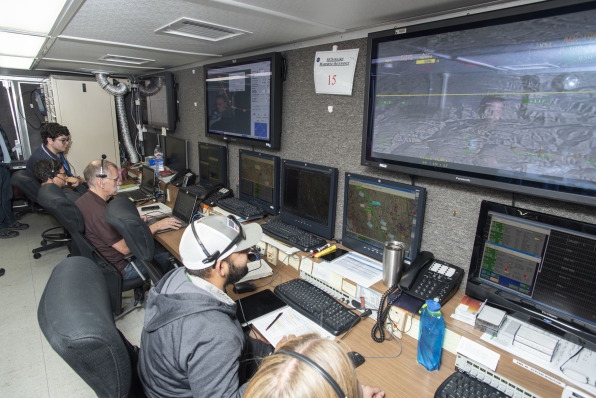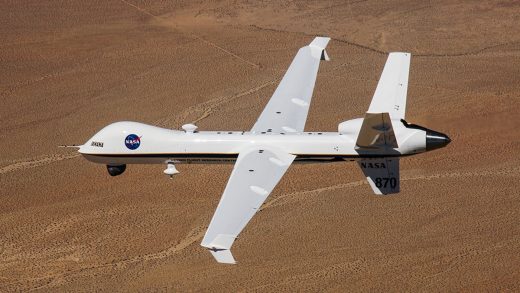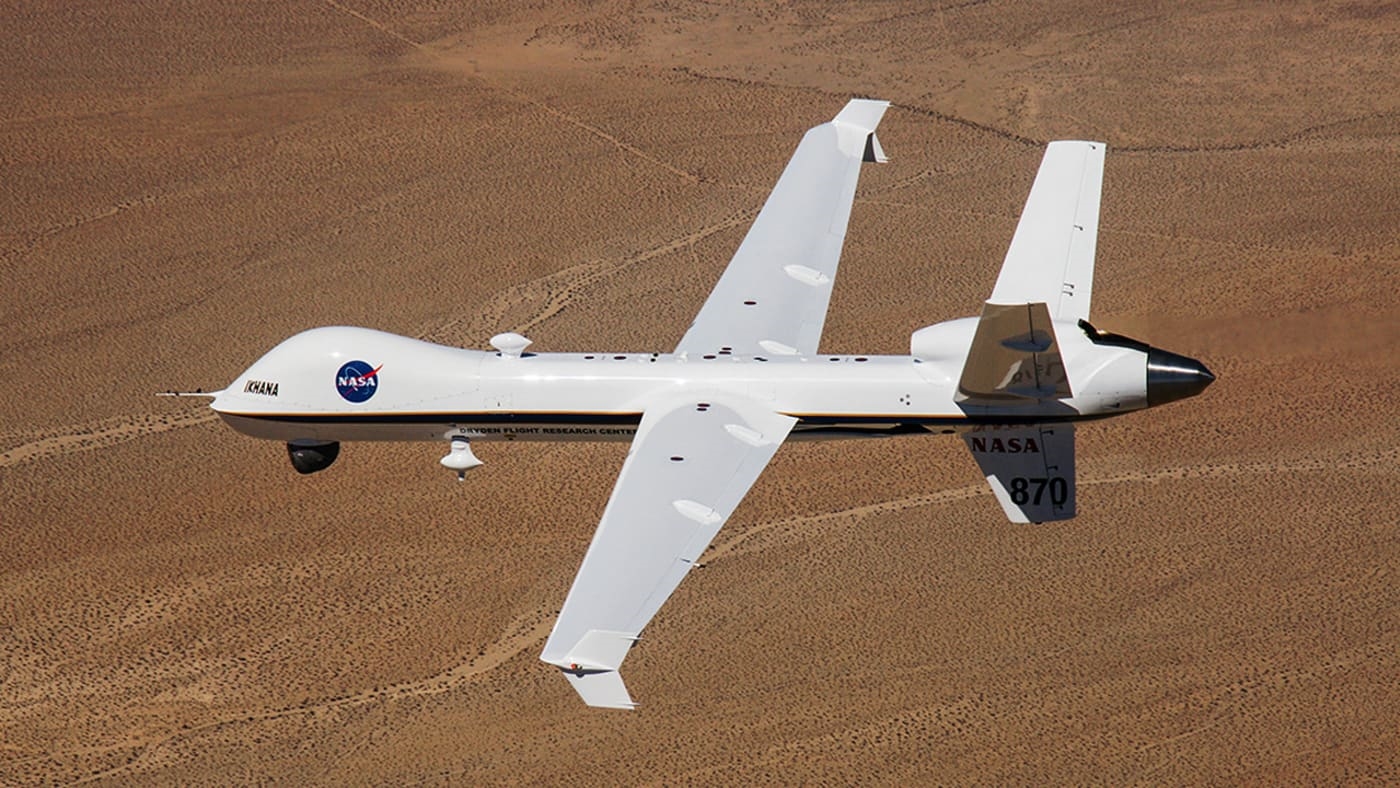In a first, NASA’s Predator drone flew solo in commercial airspace
NASA says its unmanned aircraft, which it uses to support Earth science missions and aeronautical technology development, has edged drones one step closer to flying in the same airspace as commercial and private planes.
The space agency said its remotely piloted Ikhana aircraft was able today to complete its first-ever mission without an accompanying chase plane. The technology it carried could open the door to a sky where large unmanned systems safely mingle with other air traffic in order to monitor and fight forest fires or conduct emergency search and rescue operations, NASA says.
In a statement, Ed Waggoner, the director of the agency’s Integrated Aviation Systems Program, called it “a huge milestone.”

Piloted from NASA’s Armstrong Flight Research Center in Edwards, California, the flight departed from Edwards Air Force Base and soon reached 20,000 feet in class A airspace, where commercial airliners fly. It was the first unmanned aircraft flight to use airborne detect-and-avoid technology to meet the intent of new FAA “sense-and-avoid” rules, in a test where all objectives were successfully accomplished, the agency said. Until now, large unmanned systems like Ikhana have required a chase plane when flying in commercial airspace.
The Ikhana is a General Atomics MQ-9 Predator B—the canonical military drone—that NASA acquired in 2006, and named for a Native American Choctaw word meaning intelligent, conscious, or aware. Its sense-and-avoid technology, provided by General Atomics and Honeywell, includes airborne radar, an air traffic alert and collision avoidance system, a system that broadcasts information to other aircraft, and ADS-B, a surveillance system that lets the aircraft determine its position via satellite. All planes in U.S. airspace must adopt ADS-B by January 2020 to comply with FAA regulations aimed at upgrading the technology that’s used to currently track airplanes.
(62)



